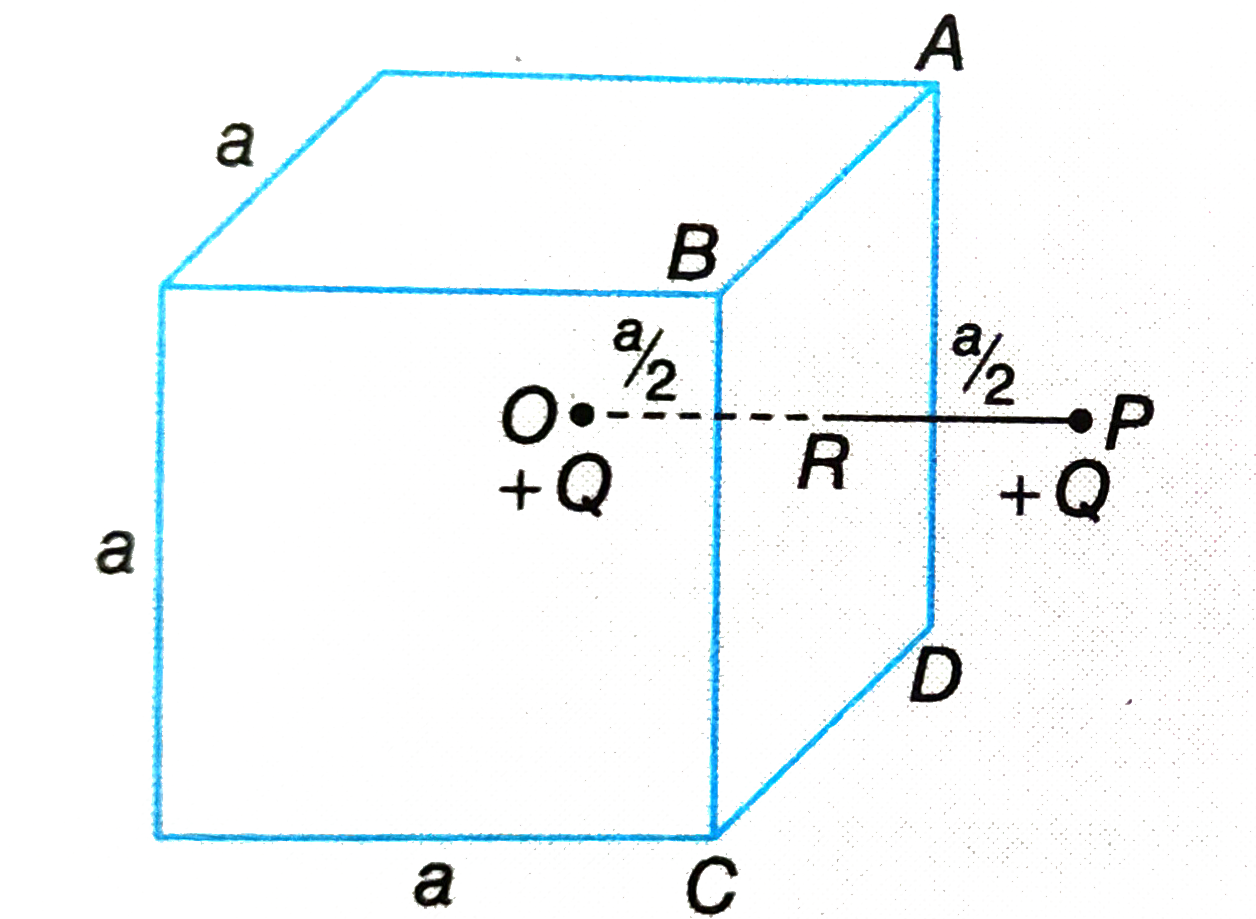Consider a region in free space bounded by the surfaces of an imaginary cube having sides of length a as shown in the diagram. A charge +Q is placed at the centre O of the cube. P is such a point outside the cube that the line OP perpendicularly intersects the surface ABCD at R and also OR=RP=a2. A charge +Q is placed at point P also. What is the total electrie flux through the five faces of the cube other than ABCD?

Q∈0
5Q6∈0
10Q6∈0
zero
According to Gauss' theorem,
ϕ=∮s→E.d→s=Q∈0
The electric flux linked with each surface of the cube are equal and is given by,
ϕ=Q6∈0
The total electric flux linked with the five faces of the cube other than ABCD due to charge +Q at point O is 5Q6∈0. Given, OR=RP=a2 and the charges placed at points P and Q are equal.
Now, if the charge +Q placed at point P is enclosed by a similar cube, then the electric flux only through surface ABCD will be Q6∈0. The same amount of flux (Q6∈0) will emerge from the remaining five surfaces of the cube centred at O.
Hence the total electric flux linked with the five faces other than ABCD
=5Q6∈0+Q6∈0=Q∈0
The optino (A) is correct.
Topper's Solved these Questions
- ELECTRIC FIELDBOOK - CHHAYA PUBLICATIONCHAPTER - ELECTRIC FIELDEXERCISE - EXAMINATION ARCHIVE ( JEE MAIN )
3 Videos
- ELECTRIC FIELDBOOK - CHHAYA PUBLICATIONCHAPTER - ELECTRIC FIELDEXERCISE - EXAMINATION ARCHIVE ( AIPMT)
1 Videos
- ELECTRIC FIELDBOOK - CHHAYA PUBLICATIONCHAPTER - ELECTRIC FIELDEXERCISE - EXAMINATION ARCHIVE (WBCHSE)
13 Videos
- ELECTRIC ENERGY AND POWERBOOK - CHHAYA PUBLICATIONCHAPTER - ELECTRIC ENERGY AND POWEREXERCISE - CBSE SCANNER
7 Videos
- ELECTRIC POTENTIAL BOOK - CHHAYA PUBLICATIONCHAPTER - ELECTRIC POTENTIAL EXERCISE - CBSE Scanner
13 Videos
Similar Questions
Knowledge Check
A charge 'Q' is placed at each corner of a cube of side 'a'. The potential at the centre of the cube is
A8Qπε0aB4Q4πε0aC4Q√3πε0aD2Qπε0a
A charge Q is placed at the centre of a cube. Find the flux of the electric field through the six surfaced of the cube.
View SolutionA charge q is placed at the centre of a cube of side l what is the electric flux passing through two opposite faces of the cube ?
View SolutionA charge q is placed at the centre of a cube of side l what is the electric flux passing through two opposite faces of the cube ?
View SolutionA charge q is placed at the centre of a cube of side l what is the electric flux passing through two opposite faces of the cube ?
View SolutionA charge Q is placed at each corner of a cube of side a. The potential at the centre of the cube is
View SolutionIf a point charge q is placed at one corner of a cube, what is the flux linked with the cube?
View SolutionIf a point charge q is placed at one corner of a cube, what is the flux linked with the cube?
View Solution
